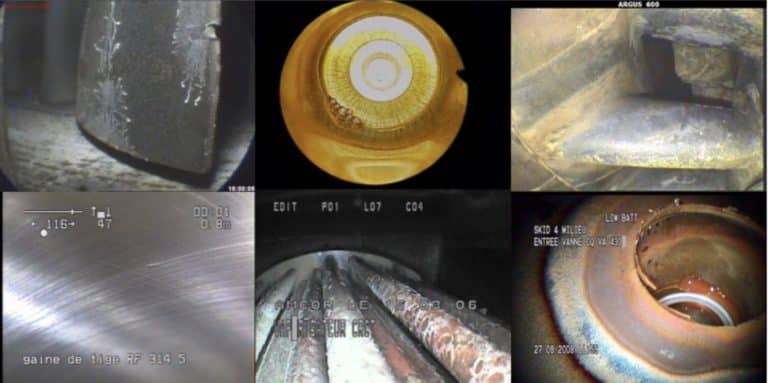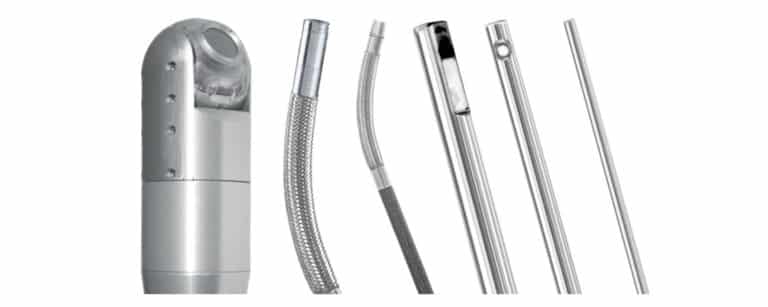Remote video inspection takes place whenever an operator needs to visually inspect inside an element (tank, pipe, vessel, motor, ….) with no direct vision. It is widely known as Remote Visual Inspection or RVI inspection. Applications for remote visual inspection are numerous in industrial environments and include :
- Controls on new pieces : weld, surface finish, edges, cleanliness.
- Periodic controls of regulated elements : blades on turboshaft engines, pipes, tanks, machine wears. Looking for cracks, impacts, damages.
- Troubleshooting in production environments : leak or blockage detection, mechanical elements wear, pitting corrosion.
- Post damage expertise.
- FoD prevention with foreign object search and extraction

Which tools to use to a RVI inspection ?
Remote visual inspection, be it with videoscopes or inspection cameras, is commonly used in the following industries:
- Aeronautics : plane and helicopter inspection of turbines, blades, combustion chambers, gear boxes, shafts.
- Power Generation : access to parts and areas with nuclear radiation, inspection of steam generator, reactor internals, pressure vessels, boilers. Windmills, gearboxes, blades and structure inspection and controls. Heat exchangers, turbines, industrial boilers.
- Pharmacy and Food : stainless steel pipe networks controls, fermentation tanks, sterile areas, reaction vessels, blenders.
- Chemicals, Oil & Gas, Refineries : pressure vessels, storage tanks, pipes, process waste lines, reactors, leak and blockage detection,
- Control of mechanical parts : welds, edges, surface, threads on new parts; wear and foreign object control on running parts.
- Construction and engineering structures : post damage expertise, structure controls, pipes, air ventilation ducting, cracks on structures, sprinklers, elevator shafts, fire safety systems.
- Drilling : looking for cavities, soil layers analysis.

Remote visual inspection can be performed with 4 types of products : videoscopes (or video endoscopes), inspection cameras, borescopes (or endoscopes) and fiberscopes. Each product has its own technical characteristics and potential applications. See here the difference between a videoscope and inspection camera. They all include two main functions : lighting and vision. Lighting in order to bring light into the exploration zone which is usually dark, and vision in order to transfer images from the exploration zone to the operator.
